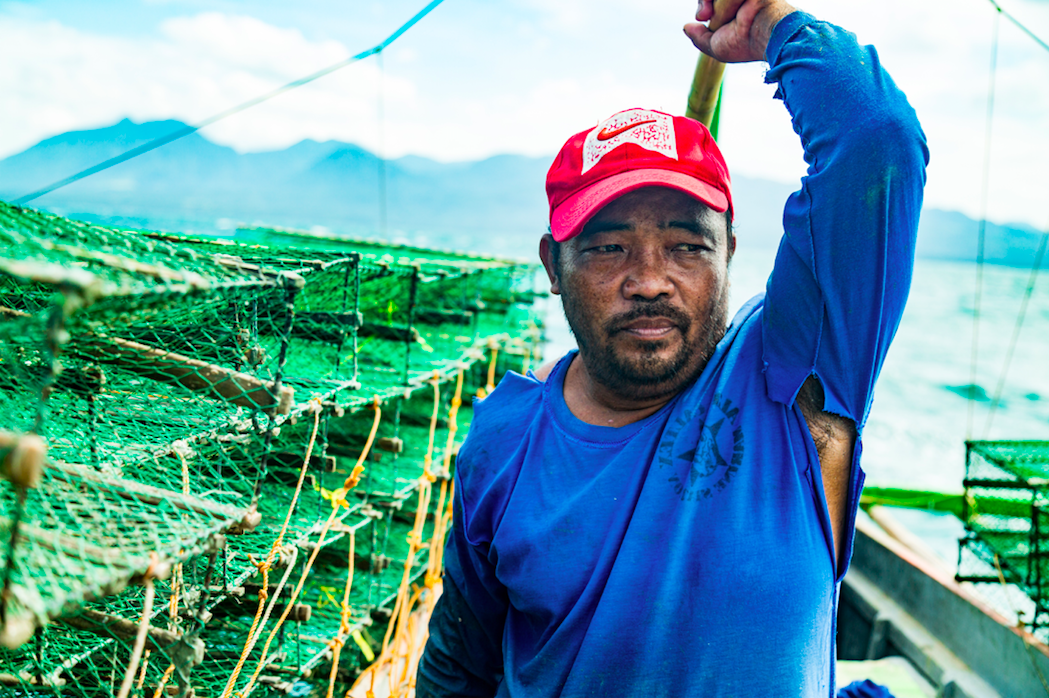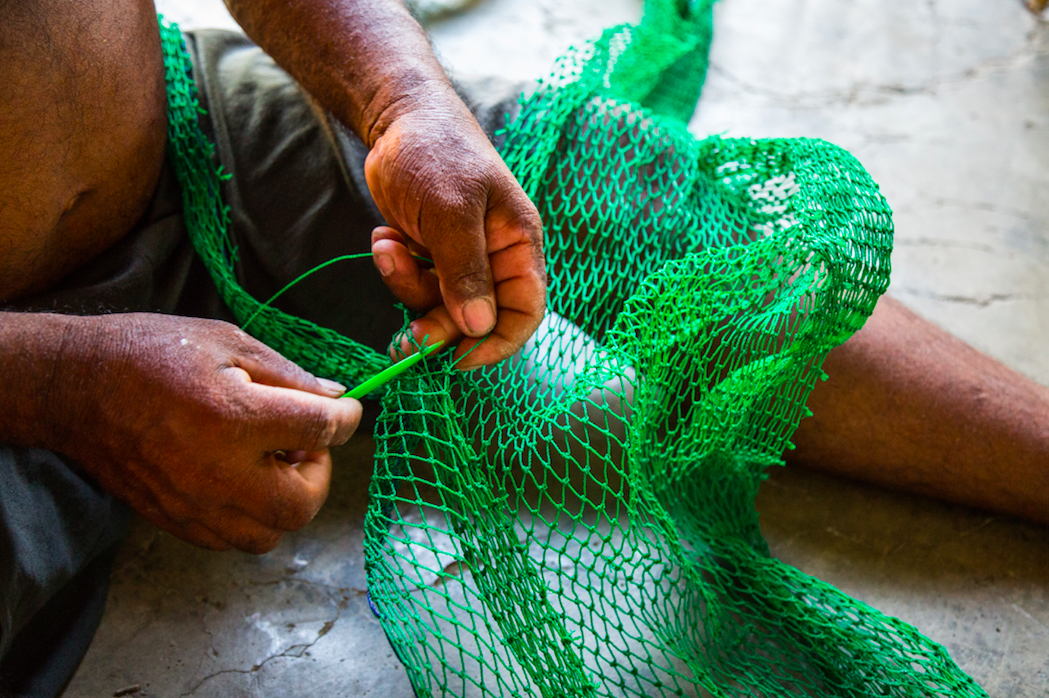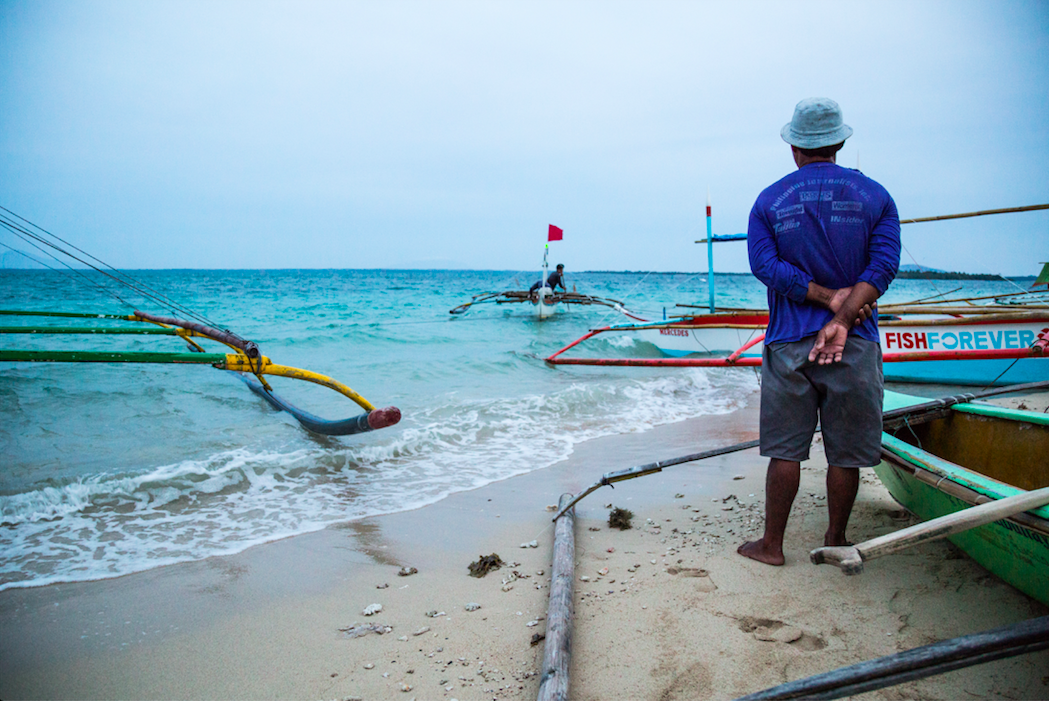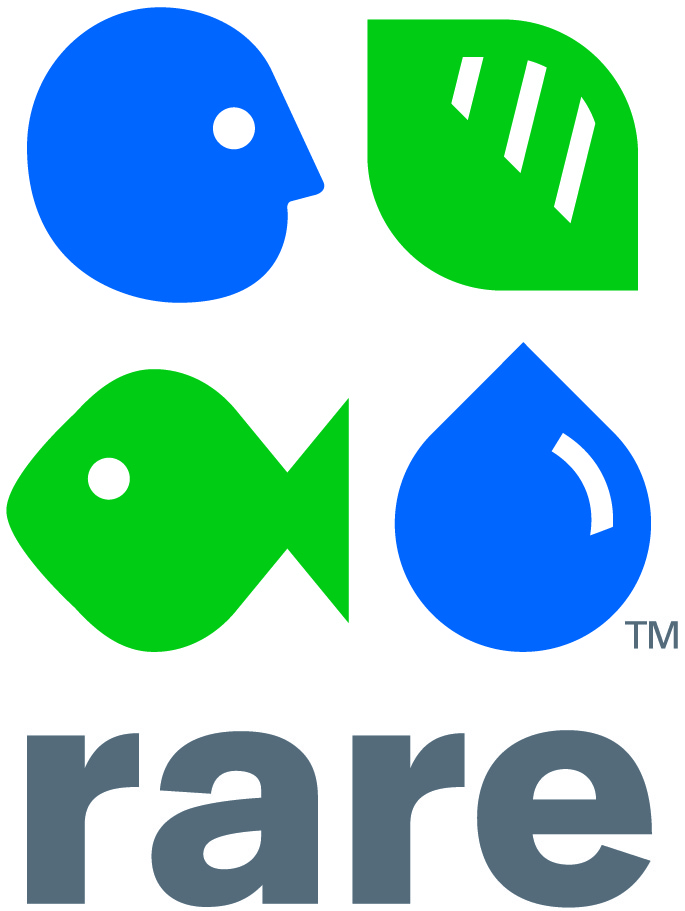Last fall, Rare and photojournalist Jason Houston teamed up to create a photo series documenting the lives of people from the Caringo Island fishing community in the Philippines. We wanted to introduce American audiences to the fishing boats, markets, kitchens, and streets – at least virtually – of a small-scale fishing community. Most of the project followed Rodel Bolaños, a 43-year-old fisher. As Houston’s camera clicked in the background, Bolaños lived out something familiar to us all: the grind.
Rodel rose each morning at the same time, got dressed and left while the morning was still dark. He returned home after work, shared a meal with his wife and kids, tinkered with some side projects in his backyard, shared an evening drink with a few friends, and went to bed. The cycle started again the next morning – a seemingly clockwork routine most Americans know. Only for Rodel, the work is crab fishing from a wooden boat on San Miguel Bay. The work clothes are a breathable shirt and a Nike baseball cap that shields his face from the sun’s beating rays. Home is a stone’s throw from a palm tree-dotted beach. And the job security? Steadily falling, as it is for all Philippine small-scale fishers.

Photo Credit: Jason Houston/Rare
There are millions of people trying to make a living like Rodel, fishing the waters near their homes. And they each face the same uncertainty. It’s no secret that the world’s oceans are becoming increasingly depleted. Roughly 90 percent of the world’s fisheries are overexploited or declining. Population growth, technological improvements, little resource management and minimal enforcement of sustainable fishing regulations are decimating global fish stocks.
Related Article: “WHY DEEP DIVE FISHING NEEDS SAFER STANDARDS“
Industrial fisheries are starting to see signs of hope. Thanks to national commitments to end illegal fishing, market-based approaches like certification and rights-based management models are creating incentives for sustainable fishing. Along with the European Union, countries like the United States, Canada and New Zealand are now adopting more sustainable practices in their industrial fisheries.
In the developing world, however, the struggles of coastal fishers like Rodel Bolaños go largely unrecognized. Small-scale fisheries get much less attention – despite their global significance for food security and the fact that coastal overfishing is arguably the greatest threat to marine biodiversity.

Photo Credit: Jason Houston/Rare
The United Nations’ Sustainable Development Goals (the “SDGs”) have the potential to change that. In 2015, the UN General Assembly created a set of 17 SDGs for transforming our world by ending poverty, achieving gender equality, ending hunger, and addressing climate change, among others. Since their founding in 2015, the SDGs have become a guiding force for both international and local development action.
One of the 17 goals – SDG 14: Life Below Water – focuses entirely on conservation and sustainable use of the oceans, seas and marine resources. This June, for the first time, the UN is convening the “Ocean Conference” at its headquarters in New York to support SDG 14’s implementation. Over five days, the conference will bring together important ocean stakeholders, including intergovernmental organizations, international financial institutions, non-governmental organizations, civil society organizations, academic institutions and the private sector.
The SDGs and the Ocean Conference are an important opportunity to spotlight the plight of small-scale fishers like Rodel and begin building interest in a growing suite of promising solutions. Fortunately, SDG 14 addresses the importance of small-scale fisheries to food security and economic livelihoods, striving to bolster economic benefits to Small Island Developing States and Least Developed Countries through sustainable use of natural resources, including fisheries.

Photo Credit: Jason Houston/Rare
Here’s a look at how small-scale fisheries reform can help nations across the globe achieve the SDGs.
A Ripple Effect: Small-Scale Fisheries and the SDGs
Developing countries account for 95 percent of the global fishing workforce, and 90 percent of those fishers operate in small-scale fisheries. Small-scale fishers are responsible for roughly half of the global fish catch, and the majority of that catch is consumed domestically. While billions of people rely on fish for up to about 20 percent of their animal protein intake, impoverished coastal communities have a disproportionate dependence on fish. Their jobs, their food, even their cultural identities are inextricably linked to the ocean.
At Rare, we see the potential for SDG 14 every day through our community-first approach to achieving sustainable coastal fishing in Brazil, Indonesia, Mozambique and the Philippines. The approach combines two concepts:
First: Combat overfishing by creating an area of “managed access” that grants local fishers exclusive access to delineated fishing areas, rather than leaving it to open for anyone to access.
Second: Align the managed access fishing area with a marine protected area (MPA), which helps the depleted fishery recover under the watchful eyes of licensed local fishers who will benefit from that recovery.
Promising models like this one offer multiple benefits to local communities. In UN parlance, these co-benefits include sustainable management, ecosystem restoration, harvest regulations, and ending destructive fishing. But the benefits go beyond fishing. Communities able to recover their fish stocks are also reducing poverty and hunger and promoting gender equality in the process. Women are key actors within the sector, especially in post-harvest and processing (nearly 90 percent of such secondary activities fall to women). Rare’s approach, which depends on engaging the entire community in this transformation, not only gives women a more significant voice but creates greater social cohesion, all of which makes the community more resilient to external shocks, especially from climate change.

In the Photo: Bringing Crabs To Broker In Mambungalon Photo Credit: Jason Houston/Rare
So helping fishers like Rodel helps whole communities become more socially and physically resilient to climate change (SDG 13). Mangroves, seagrass beds, and coral reefs – important natural barriers to extreme weather events – are better protected, and the community’s social fabric is more organized and responsive to environmental changes. Physical resilience and social cohesion are two powerful lines of defense for communities that will be hit first and hardest by the negative effects of climate change.
Recommended Reading: “A GLOBAL MOVEMENT TO PROTECT OCEAN RESOURCES“
Clearly, there’s ample reason for anyone interested in oceans, poverty, hunger, or climate change to take an interest in restoring coastal fisheries. As catch declines and fishers are left without economic alternatives in their communities, few can support themselves and their families without joining the race to fish, in an industry highly susceptible to impacts from natural disasters and climate change as well as the mismanagement of markets. Small-scale fishers and their communities are trapped in this cycle. There is still a chance to bring the cycle to an end for millions of coastal people.
I am hopeful that the UN Ocean Conference will mark a turning point. People like Rodel and his family are counting on it.











